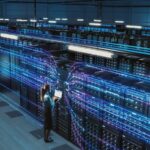Who are the workforce of tomorrow?
The workforce of tomorrow are digital natives: they have used the Internet and other technologies from a young age in both their personal and educational lives. Accustomed to dependable and frictionless technology 24/7, they learn at high speed and have very little tolerance for low-tech or disjointed digital systems. This new generation can offer employers wide-ranging knowledge and skills; in return, they demand seamless experiences within businesses that value flexibility and personal freedom.
In many ways, the future workforce are already here. According to Citrix, about 50% of workers find themselves as digital natives; by 2025, this figure will rise to 75%. As the workforce evolves, the line between personal life and professional life will continue to blur. The core values individuals hold in their private lives will extend into the workplace, so employees will look for business cultures that align with their personal vision.
Lagging behind
While the pandemic has seen accelerated digitisation in many organisations, the standard offering is still worlds away from what the workforce of tomorrow expect and need. Too many companies rely on outdated systems that don’t offer employees the flexibility and simplicity they enjoy in their private lives. Businesses that fail to invest in their office spaces and technology will lose talented employees to more forward-thinking and adaptable competitors.
Research by Apogee found that more than a third (35%) of UK employees have struggled to transition from work to home to hybrid due to technological problems. While working from home during the pandemic, almost half (45%) of workers were left frustrated with laptops and hardware not functioning properly. We have seen levels of frustration grow exponentially as workplace technology standards fail to match the frictionless, intuitive systems used outside of work.
The price of frustration
Frustrated employees are disengaged employees. They are not inspired by workplace tasks and feel dissatisfied with the returns on their time and effort. With a new generation becoming key players in the ’war for talent’, businesses cannot afford to frustrate their workforce with subpar equipment.
Lacking adequate IT solutions also impacts workforce productivity. Companies hit by downtime and technical glitches stand to lose money as precious time is wasted on troubleshooting.






















































